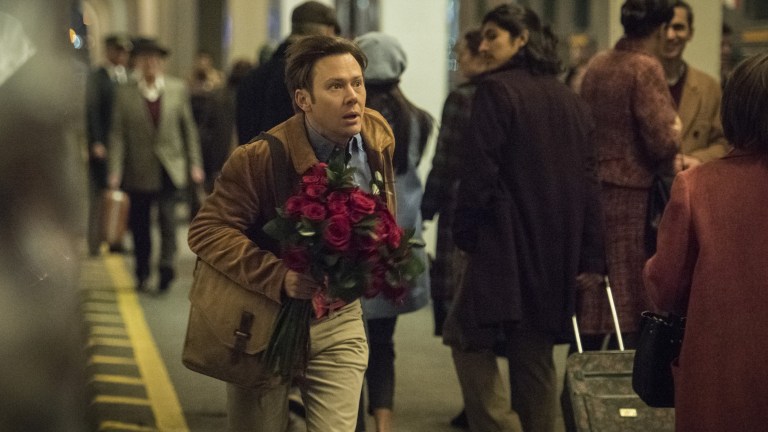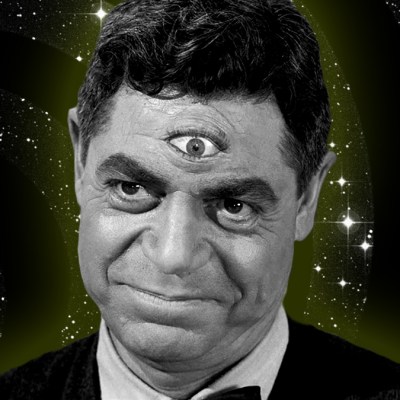The Twilight Zone Season 2 Episode 1 Review: Meet in the Middle
The Twilight Zone season 2 opener is all conclusion - no setup.

This The Twilight Zone review contains spoilers.
The Twilight Zone Season 2 Episode 1
The things most people who have never seen The Twilight Zone know about The Twilight Zone are the endings.
One does not need to have watched any of the 156 episodes of the original Rod Serling-hosted run of the show to know what a black and white screenshot of a man holding a broken set of eye-glasses means. The same goes for the image of pig-faced nurses and doctors, and also the very concept of “To Serve Man.”
In “Meet in the Middle,” the first episode of the second season for CBS All Access’s modern reboot of The Twilight Zone, the show seems to be in search of a classic ending of its own. And to its credit, it gets pretty close. The conclusion of “Meet Me in the Middle” is satisfyingly twisty and upsetting while operating (for the most part) within its own logic. Unfortunately, much of what precedes that ending ends up feeling inessential as a result.
Just as The Twilight Zone season 1 did with Kumail Nanjiani and “The Comedian,” season 2 decides to put its best foot forward in terms of cast, opening with perpetually underrated faves Jimmi Simpson (Westworld) and Gillian Jacobs (Community). Simpson is Phil Hayes, an undistinguished, unsatisfied bachelor who nevertheless seems to have impossibly high standards in dating. While on a boring date with an equally undistinguished woman (we know it’s boring because she mentions Yelp scores and cooking shows a lot – both writerly shortcuts to indicate basicness…while ironically being quite basic themselves), Phil suddenly hears another woman’s voice in his head.
“Hello? Is someone there?” it asks.
As it turns out, the voice inside Phil’s head isn’t a ghost, an angel, or his consciousness. It’s simply a woman from the other side of the country named Annie Mitchell.
Jordan Peele’s customary opening monologue here is among the strongest this iteration of the show has pulled off yet. Peele, fittingly trapped inside a bathroom mirror as Phil fears for the loss of his mind, promises an episode that will ask all the right questions.
“A voice in your head can mean a few different things. Your conscience, inspiration or madness. What if it were crossed wires?” he asks.
This is an excellent setup as it subtly suggests that the episode is prepared to pick the most interesting possible explanation – the aforementioned crossed wires. It’s as if all of humanity exists on a psychic network but the locks on our brains are strong enough to keep other brains out. The script, as penned by Emily C. Chang & Sarah Amini, is absolutely correct in taking this route. The problem is that it then doesn’t go far enough in exploring the implications of that route.
Thanks to Black Mirror episodes like “Hang the DJ,” “San Junipero,” and “Be Right Back,” we know that blending love stories and science fiction stories can work in this anthological format. Hell, they can work really, really well. Something about this love, however, doesn’t work.
We eventually come to find out that it doesn’t work because it isn’t a love story at all. In reality, it’s a story of one person exploiting another’s loneliness. That new context doesn’t do much to make the majority of “Meet in the Middle’s” run time feel any more interesting or worthwhile. A lot of that comes down to simply poor characterization.
There’s a high level of difficulty in what Simpson is asked to do with the character of Phil Hayes. Phil’s misanthropic tendencies are underdeveloped to begin with, so his eventual infatuation with the voice in his head doesn’t fully ring true. The show posits that Annie is able to establish a sense of intimacy with Phil because of their unique connection but ultimately doesn’t do enough to argue why such an experience would be endearing and not absolutely horrifying and intrusive.
Then there is the disconnect between the auditory and visual nature of Phil’s life. Since all the dialogue and action is happening inside Phil’s head, Simpson must essentially perform on two levels. There’s the physical aspect of the performance and the internal experience of it. Simpson is a great, hugely appealing actor. He’s like if 1988 Christian Slater were somehow able to pull off Liam McPoyle too. But when the implausibility of the plot or insincerity of Phil and Annie’s chemistry takes a viewer out of the proceedings, they’ll suddenly notice how awkward Phil’s physicality would look without an audio track.
Indeed the execution is lacking through much of “Meet in the Middle.” There simply aren’t enough details written into the script to make Phil and Annie feel real, let alone make their relationship pop. The details that are added end up being more of that same “Yelp-obsessed basic woman” variety. One of the first signs that Phil is falling for Annie is him being impressed that she likes something as hardcore and awesome as….*checks notes* meat-lovers pizza.
Of course, this episode isn’t trying to wow us with a lovingly crafted exploration of consciousness as it relates to love, though I wish it did. Instead, it’s seemingly only trying to wow us all in the end. And in that goal, it’s hard to argue that it’s not successful.
The ending of “Meet in the Middle” is quite satisfying and surprising. For unbeknownst to the audience, The Twilight Zone has skipped all the technical questions about how Annie and Phil’s connection works and instead jumped right to how it can be abused. When Annie tells Phil about needing an “escape hatch” out of her current life in a loveless marriage, it’s clear that the concept will come back by episode’s end. Who could have guessed, however, that Phil would be that escape hatch.
Though Annie’s plan revolves around a Joker-like understanding of human nature and how one person will react in 20 successive scenarios, she does successfully manipulate Phil into killing her husband. She also puts quite a bit of faith in the 5’10-ish, relatively un-muscled Phil in being able to kill her enormous husband. But hey, who are we to argue with results?
Those logical quibbles aside, “Meet in the Middle” really does end in a conceptually fascinating place. The sight of Simpson covered in blood and quivering in the backseat of a squad car obviously doesn’t reach the same mythological heights as Burgess Meredith clutching his broken glasses or a hospital room full of pig doctors. Still, it’s an undeniably striking image during the time of a Twilight Zone episode that usually matters most – the ending.
Unfortunately, it’s hard to shake just how little of what comes before that ending actually matters. It’s been said time and time before by yours truly and this website at large, but the amount of potential entertainment sources on television and really through every medium is just staggering. Even in a niche category like The Twilight Zone’s science fiction/horror anthology space, things have become incredibly crowded. Places like Black Mirror, Inside No. 9, and even online forums like Reddit’s NoSleep subreddit are fit to bursting with creative, speculative horror and sci-fi content.
A fascinating ending is a given in this kind of storytelling. It’s where you have to start. To really stand out from the pack in this genre now, the details along the way to that ending can’t be ignored. Through 11 episodes thus far, that’s a lesson that this iteration of The Twilight Zone still appears to be learning.
Keep up with The Twilight Zone season 2 news and reviews here.

